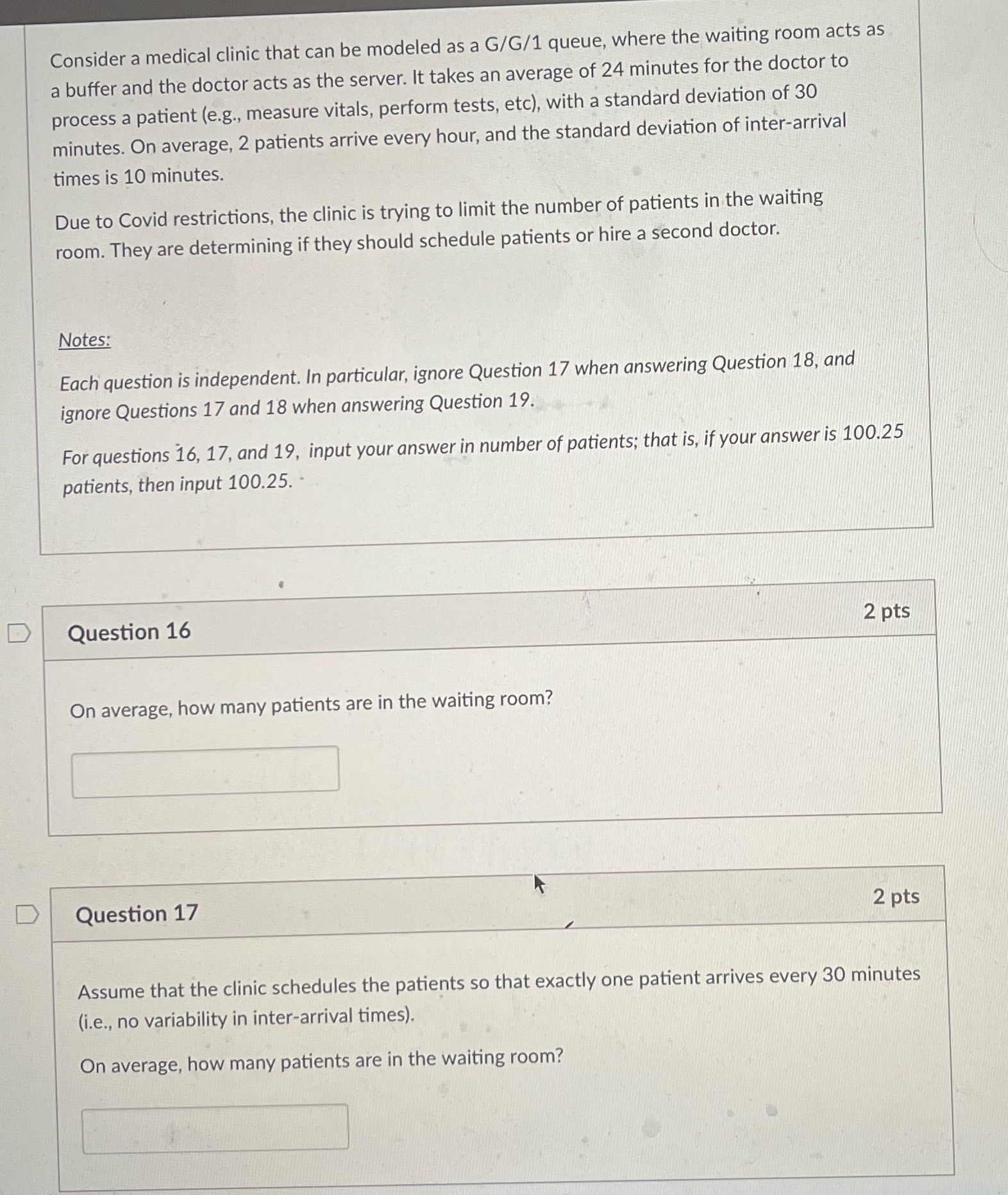Answered step by step
Verified Expert Solution
Question
1 Approved Answer
Consider a medical clinic that can be modeled as a G/G/1 queue, where the waiting room acts as a buffer and the doctor acts

Consider a medical clinic that can be modeled as a G/G/1 queue, where the waiting room acts as a buffer and the doctor acts as the server. It takes an average of 24 minutes for the doctor to process a patient (e.g., measure vitals, perform tests, etc), with a standard deviation of 30 minutes. On average, 2 patients arrive every hour, and the standard deviation of inter-arrival times is 10 minutes. Due to Covid restrictions, the clinic is trying to limit the number of patients in the waiting room. They are determining if they should schedule patients or hire a second doctor. Notes: Each question is independent. In particular, ignore Question 17 when answering Question 18, and ignore Questions 17 and 18 when answering Question 19. For questions 16, 17, and 19, input your answer in number of patients; that is, if your answer is 100.25 patients, then input 100.25. - Question 16 On average, how many patients are in the waiting room? D Question 17 2 pts 2 pts Assume that the clinic schedules the patients so that exactly one patient arrives every 30 minutes (i.e., no variability in inter-arrival times). On average, how many patients are in the waiting room?
Step by Step Solution
There are 3 Steps involved in it
Step: 1
To determine the average number of patients in the waiting room in the GG1 queue system we can use ...
Get Instant Access to Expert-Tailored Solutions
See step-by-step solutions with expert insights and AI powered tools for academic success
Step: 2

Step: 3

Ace Your Homework with AI
Get the answers you need in no time with our AI-driven, step-by-step assistance
Get Started


